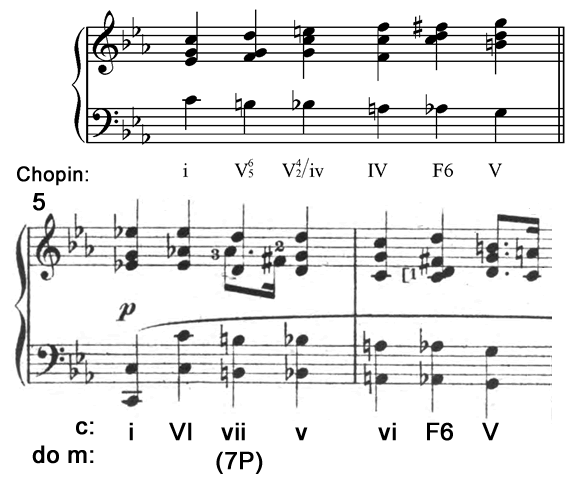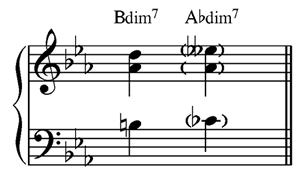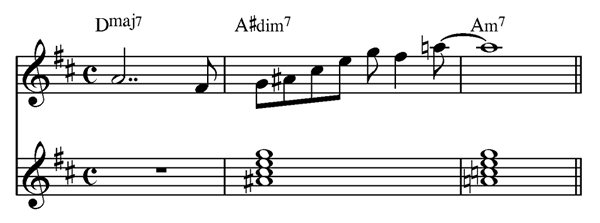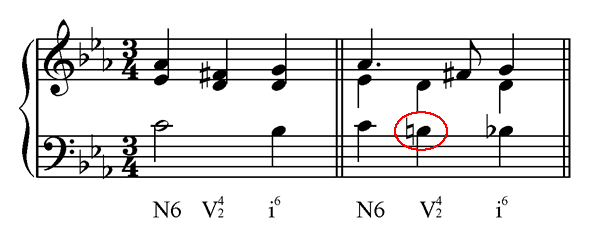Prelude No. 20 in C Minor - measures 5 to 8
José Rodríguez Alvira
Second phrase, measures 5 to 8
A descending, chromatic movement in the bass, leads us from tonic to dominant in measures 5 and 6. In the following image we show a traditional version of this progression and that of Chopin:

In Chopin's version, the diminished seventh chord in the 3rd beat of measure 5 is written as a C minor's vii degree but it resolves to a G minor chord. In jazz, this type of movement is called a passing diminished seventh chord. Note that this chord can be written as a Ab diminished seventh chord that descends by half step to G minor:

We find many examples of this chord in Antonio Carlos Jobim's music (he was an admirer of Chopin). Some measures from Vou te contar (Wave):

An example of this chord connecting two minor seventh chords:

The second chord in measure 5 could also be analyzed as a G minor's Neapolitan sixth chord (C - Eb - Ab) that resolves to a dominant chord (C - D - F#). The B natural in the bass would be a chromatic passing tone:

The melodic movement Ab to F# - typical of the Neapolitain sixth chord - is repeated harmonically in the next measure as part of the Augmented sixth that leads to the dominant:

The C minor key is established in measure 7. In measure 8, Chopin uses again the Db major chord, but this time as a Neapolitan sixth chord in root position (it was used in measure 2 as IV degree of Ab major):
The second phrase is repeated to end the prelude.
